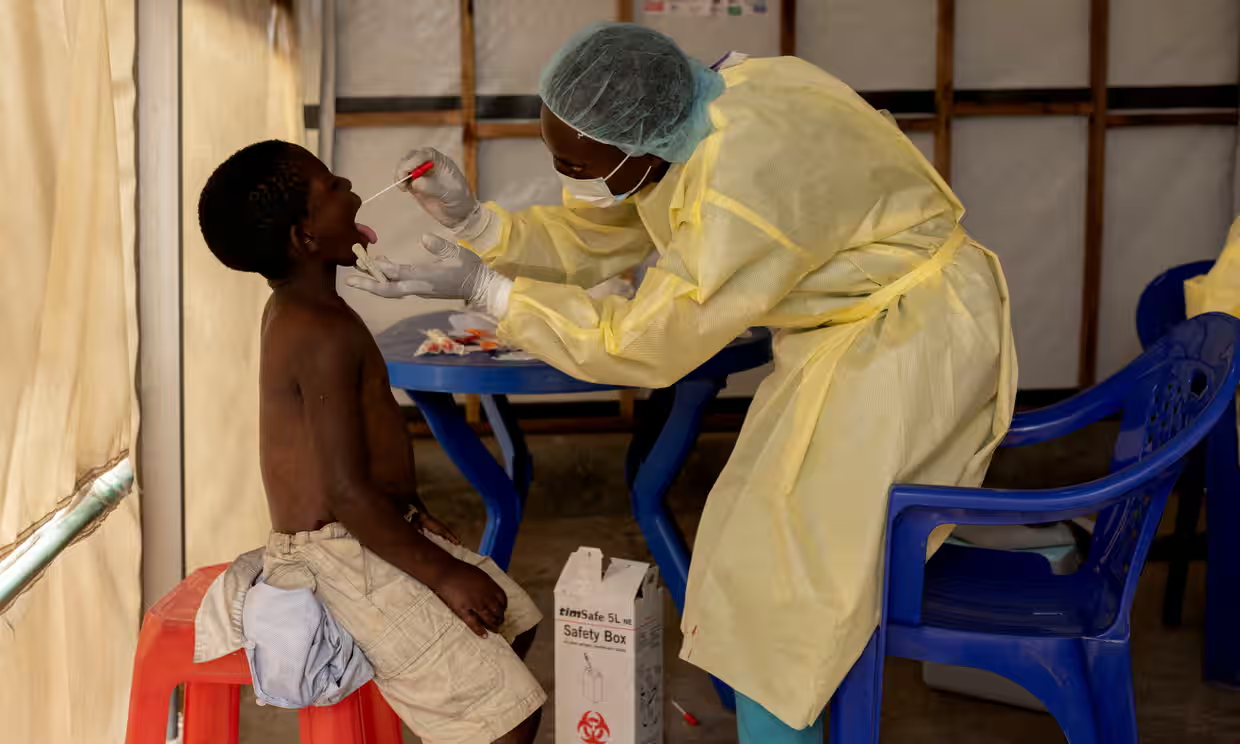What do we know about deadly mpox outbreak in Africa?

Many countries in Africa are experiencing more cases of mpox. The deadly virus is crossing national borders and there are fears it could cause a significant global outbreak. As Africa’s top public health body declared what it termed a “public health emergency of continental security”, here is what we know so far.
What is mpox?
Mpox, formerly known as monkeypox, is an infectious disease caused by a virus. Flu-like symptoms including fever, chills and muscle aches are typically followed by a rash that starts as raised spots, which turn into blisters filled with fluid. These eventually form scabs.
There are broadly two different types, known as “clades”. Clade I was once known as the Congo Basin clade, and clade II as the West African clade. Both can be fatal, although clade I historically has a higher death rate.
Where are infections happening?
Thirty-four countries in Africa are either reporting infections or considered “at high risk”, an Africa Centres for Disease Control and Prevention (Africa CDC) briefing was told.
The Democratic Republic of the Congo (DRC) is experiencing a severe outbreak with more than 14,000 reported cases and 511 deaths since the start of 2024. Outbreaks in the DRC are not unusual but this year’s figure already matches the total for the whole of 2023, and includes cases in previously unaffected provinces.
Infections are also being reported in Burundi, Kenya, Rwanda and Uganda, neighbouring countries to the DRC where cases had previously not occurred.
Why are cases rising now?
A new offshoot of clade I, clade Ib, has been detected in the east of the DRC and has been confirmed in Kenya, Rwanda and Uganda. Scientists believe this variant is playing a role in the spread.
Clade I has, in the past, typically spread by people eating infected bushmeat. Clade Ib is spreading person to person, often via sexual contact, but also through other physical and face-to-face contact, or via contaminated bedding or towels. Dr Rosamund Lewis, the World Health Organization (WHO) lead for mpox, said: “We don’t know that it’s more transmissible, but it is transmitting through an efficient mode.”
Other forms of the virus remain in circulation. The DRC is also recording cases of clade Ia, as is the Central African Republic. Clade II has been reported in Cameroon, Ivory Coast, Liberia, Nigeria and South Africa, according to the WHO.
The increase comes amid high levels of insecurity in the region, and the climate crisis is bringing humans into closer contact with nature, which are also factors according to Dr Jean Kaseya, the head of Africa CDC.
How worried should people be?
The situation is “alarming”, according to Kaseya. He has declared the outbreak a “public health emergency of continental security” – the first time Africa CDC has made such a declaration. This will allow greater coordination between countries as they respond, and require more information sharing between member states.
The WHO director general, Dr Tedros Adhanom Ghebreyesus, is gathering experts to decide whether the mpox outbreak represents a “public health emergency of international concern” – a definition that covered the Covid-19 pandemic and the 2022 mpox outbreak first detected in Europe.
How is it spreading and who is infected?
The virus is crossing borders with infected people on the move. Kenyan authorities diagnosed mpox in a long-distance lorry driver who had also been in Rwanda, Tanzania and Uganda.
Mpox is also spreading through sexual networks. Sex workers originally made up a high proportion of those infected.
In the DRC, more than 70% of cases are in under-18s. Experts say this may reflect differences in their immune system, with high rates of malnourishment leaving children vulnerable to infections. While older people in the region may have had a smallpox vaccination, which offers some protection, this is not the case for younger generations.
Do we have vaccines?
There are vaccines but issues with access. Africa CDC says it needs 10m doses, but only 200,000 are available. A lack of treatments and diagnostics is hampering the response.
Plans for vaccination programmes remain under review but are likely to involve tracing and vaccinating contacts of cases and targeting groups such as people living with HIV, who appear to be at higher risk of severe disease.
The WHO has triggered an emergency use listing for two vaccines, which allows organisations such as Gavi and Unicef to procure them for distribution.
What happened with the last big outbreak?
In 2022, an outbreak spread globally from Europe, particularly affecting communities of men who have sex with men.
The WHO declared a public health emergency in July that year, and contact-tracing programmes and mass vaccination were deployed. The emergency status was lifted in May 2023 after about 90,000 infections.


